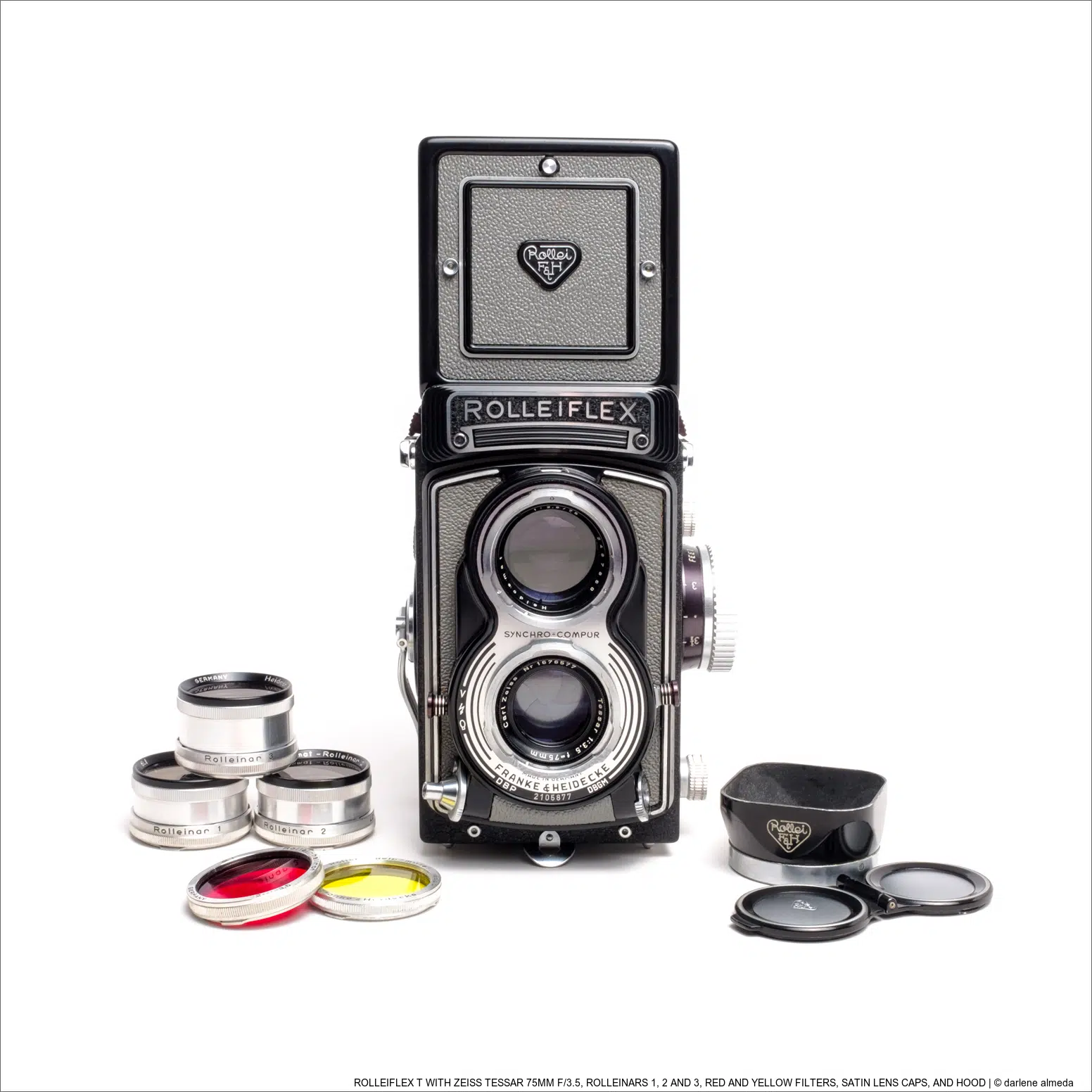
[ Rolleiflex T with Zeiss Tessar 75mm f/3.5, Rolleinars 1, 2 and 3 ]
[ Red and Yellow Filters, Satin Lens Caps, and Hood ]
In this fast-changing age of digital photography, one ingredient missing is a full frame square format camera or digital back. Yes, you can always crop off for a square, but this is not the same as looking through a dedicated square format camera’s viewfinder and being able to achieve full-resolution files. So, what does a photographer preferring the square format do? My option has always been to shoot square format film cameras.
This article is about a studio shoot using a Rolleiflex T, Rolleinars 1, 2 and 3, and a Profoto D1 Air 500 w/s monolight. I have no experience with any other Rolleiflex models, so please research flash synchronization with your particular equipment, and because Rolleiflex cameras are antiques (mine was originally purchased in 1959 as per the registration card), make sure your camera has been serviced and is ready to shoot. My Rolleiflex was fitted with x-synchronization from the factory which made my preference of shooting with remote control flawless.
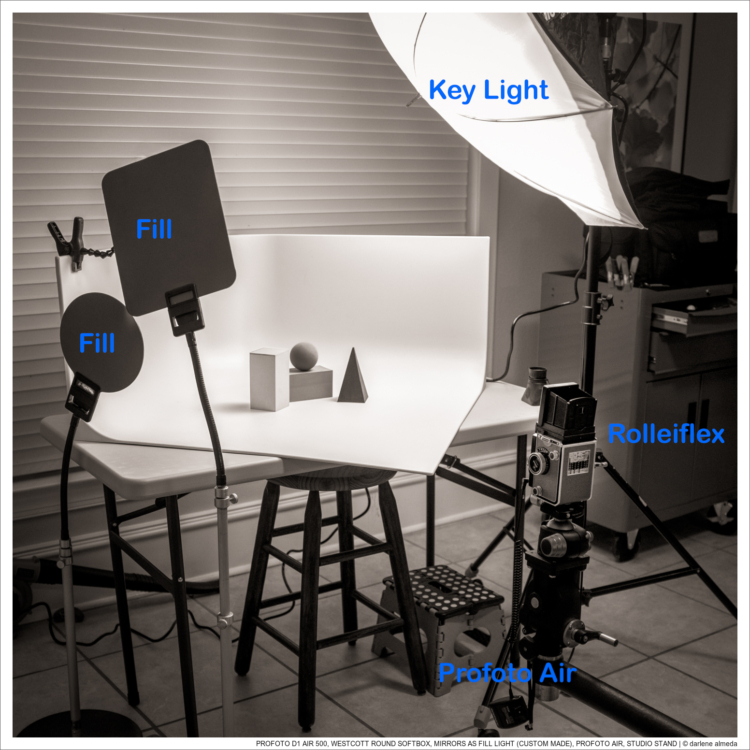
[ Profoto D1 Air 500, Westcott Round Softbox, Mirrors as Fill Light ]
[ Profoto Air, Studio Stand ]
I enjoy abstract art and decided to shoot geometric shapes for this test. I find playing with shapes fundamental to how I approach framing shots. I like to keep things simple with lighting, so I will use one light with mirrors-as-fill light, and the camera will be mounted on my studio camera stand. Take note that because of the waist level design, the camera will be low to the ground since I am 5’3”.
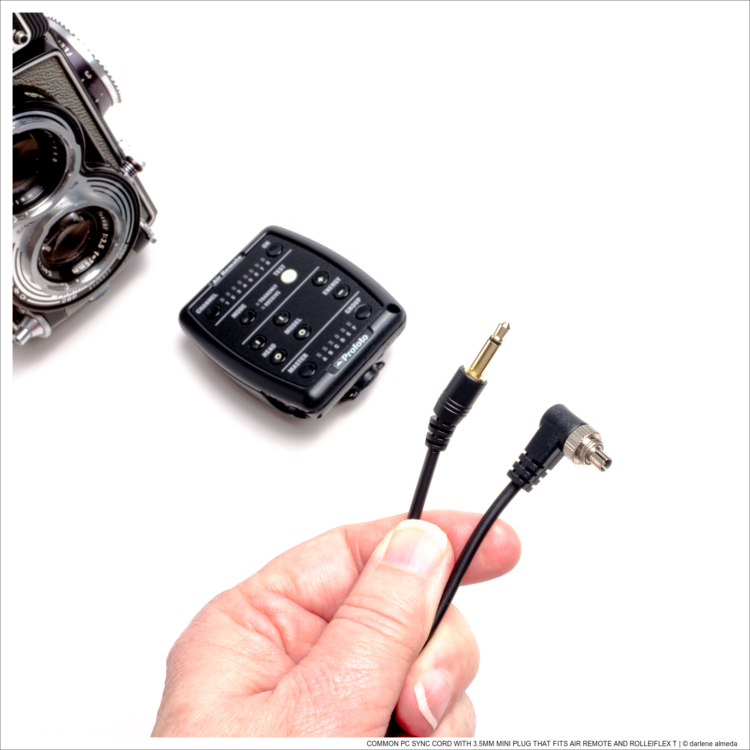
[ Common PC Sync Cord with 3.5mm Mini Plug that Fits Air Remote and Rolleiflex T ]
Here is the connection between my studio light and the Rolleiflex, a basic PC Sync Cord with a 3.5mm mini plug to PC (Prontor-Compur). I buy these a few at a time because from my experience, the PC cord is the first to break the connection between the camera and flash. Before I retired from commercial work, I had Paramount Cords make custom cords for my equipment, and I may resort to that again, but as long as I have a few in the studio, I have backups. Different remotes may use different-sized mini plugs, so do your research here as well. If your light does not have a remote-control trigger, use a cord that fits your light’s PC connection and your camera.
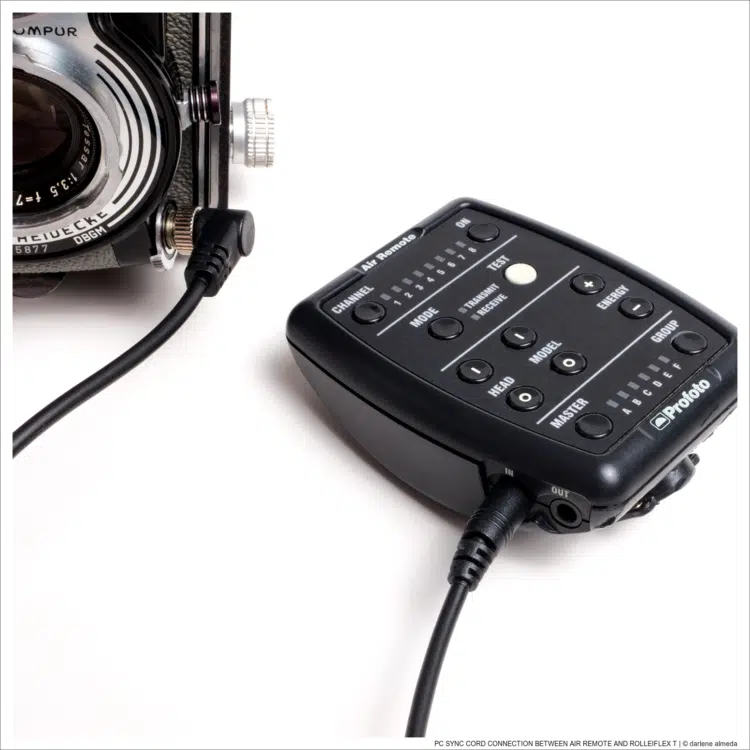
[ PC Sync Cord Connection Between Air Remote and Rolleiflex T ]
Now that the lighting is set, I can test the Rolleinars. Why am I testing these? Because the first time I used them, I screwed up a few photos by not paying attention to a very important Red Dot.
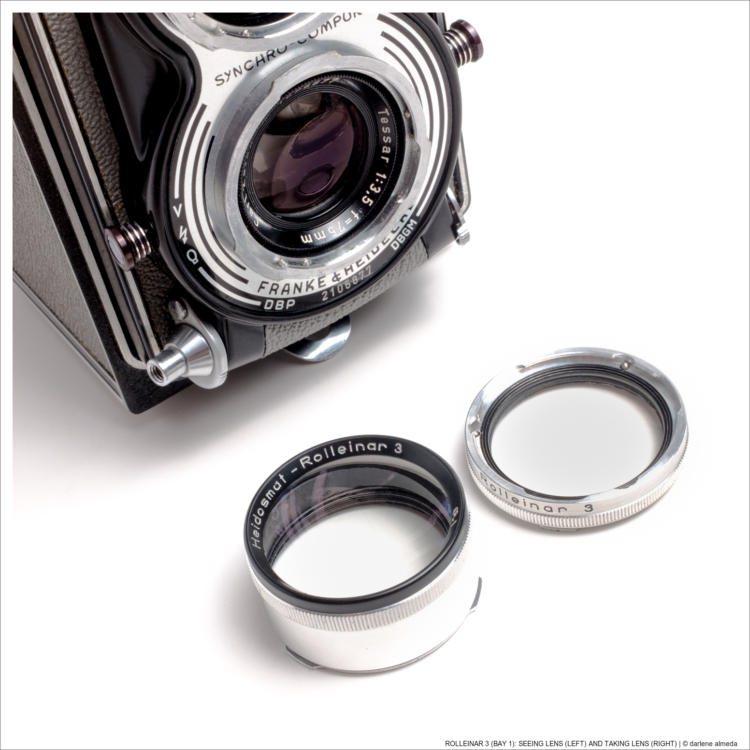
[ Rolleinar 3 (Bay 1): Seeing Lens (left) and Taking Lens (right) ]
The newest of the Rolleinars come in a set of two. The smaller lens is for the taking lens (the bottom lens takes the picture), and the larger lens is for the seeing lens (the top lens is for seeing). The top part of the Rolleinar is larger because it incorporates a prism along with the diopter that corrects for close focusing parallax.

[ Rolleinar Red Dot in Correct Position ]
If you do not have the Red Dot aligned as shown in the photo, “what you see is not what you get.” At least in my case, that is what happened, as I lost about a third of my photo. Not only did I want to test for parallax in this session, but I also wanted to see from a standing position what I could do with the power of the Rolleinars.
The Results
The photos below were shot at f/16 with Acros 100 developed in Pyrocat HD. The film was scanned on an Epson V700 and post-processed in Lightroom. There was no stacking of filters and the four photos were shot in an orderly sequence: no Rolleinar, Rolleinar 1, 2, and 3. The following photos are shown not in the sequence as shot, and it is up to your vision to try to guess which Rolleinar was used. I hope you have enjoyed what you have read and seen in this article.

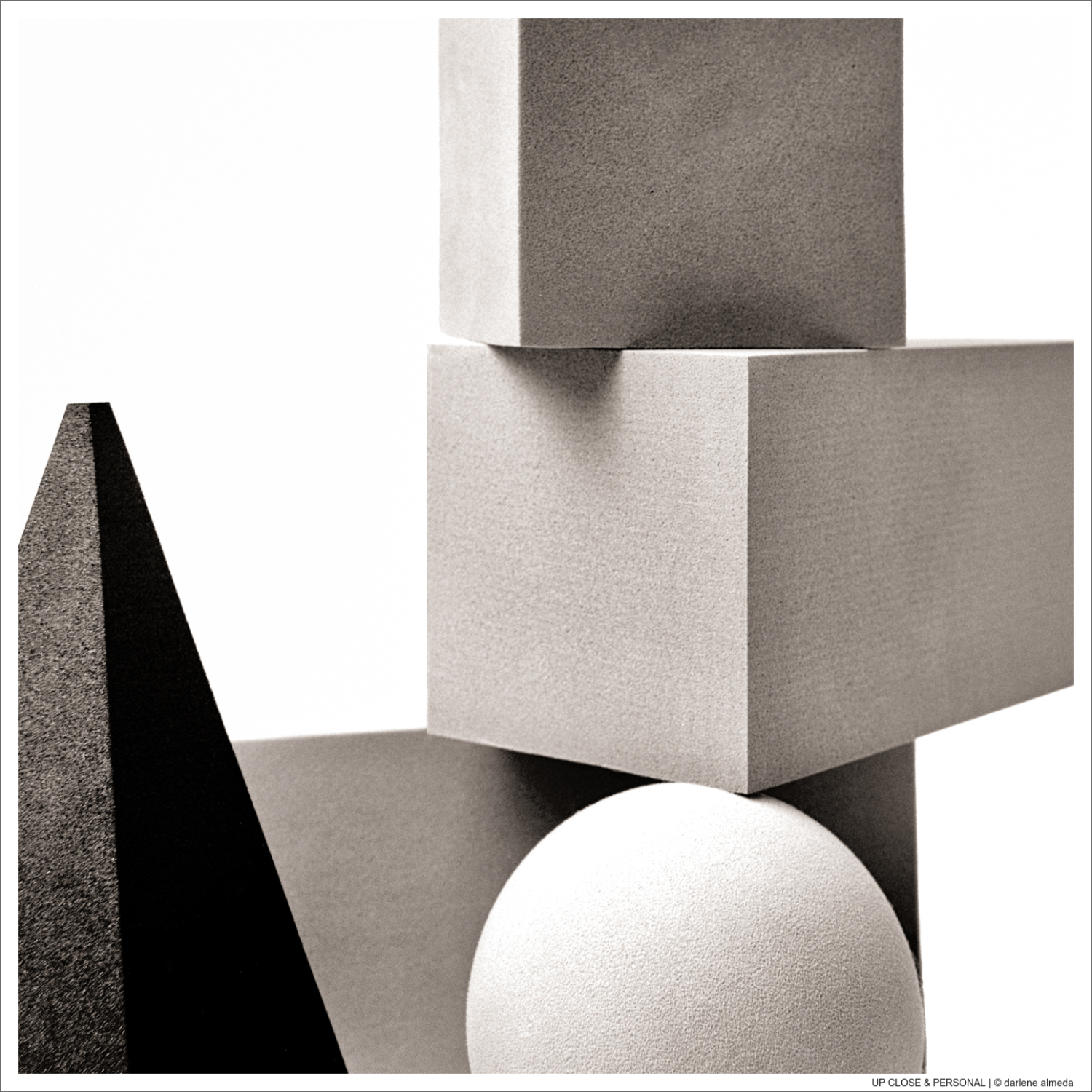
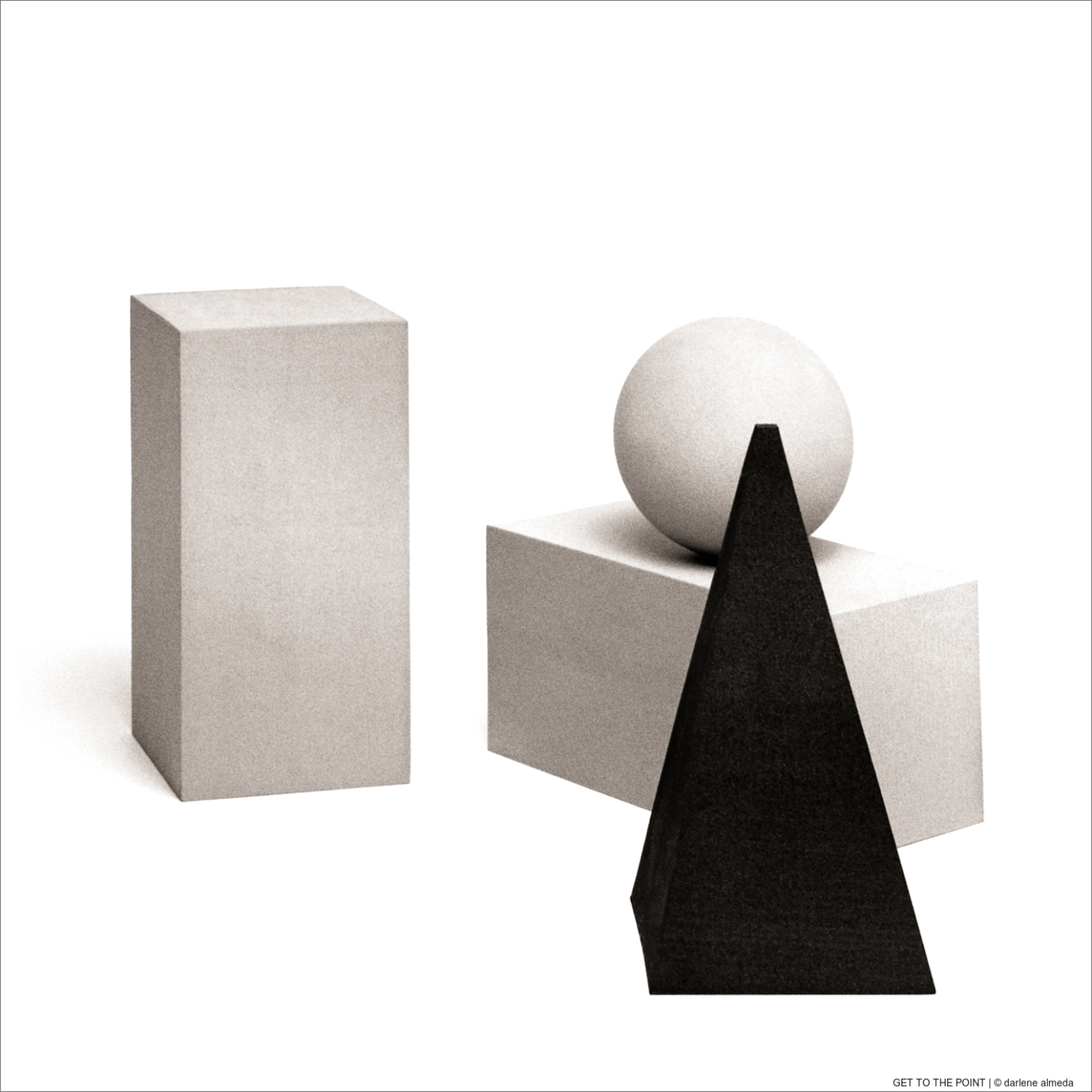
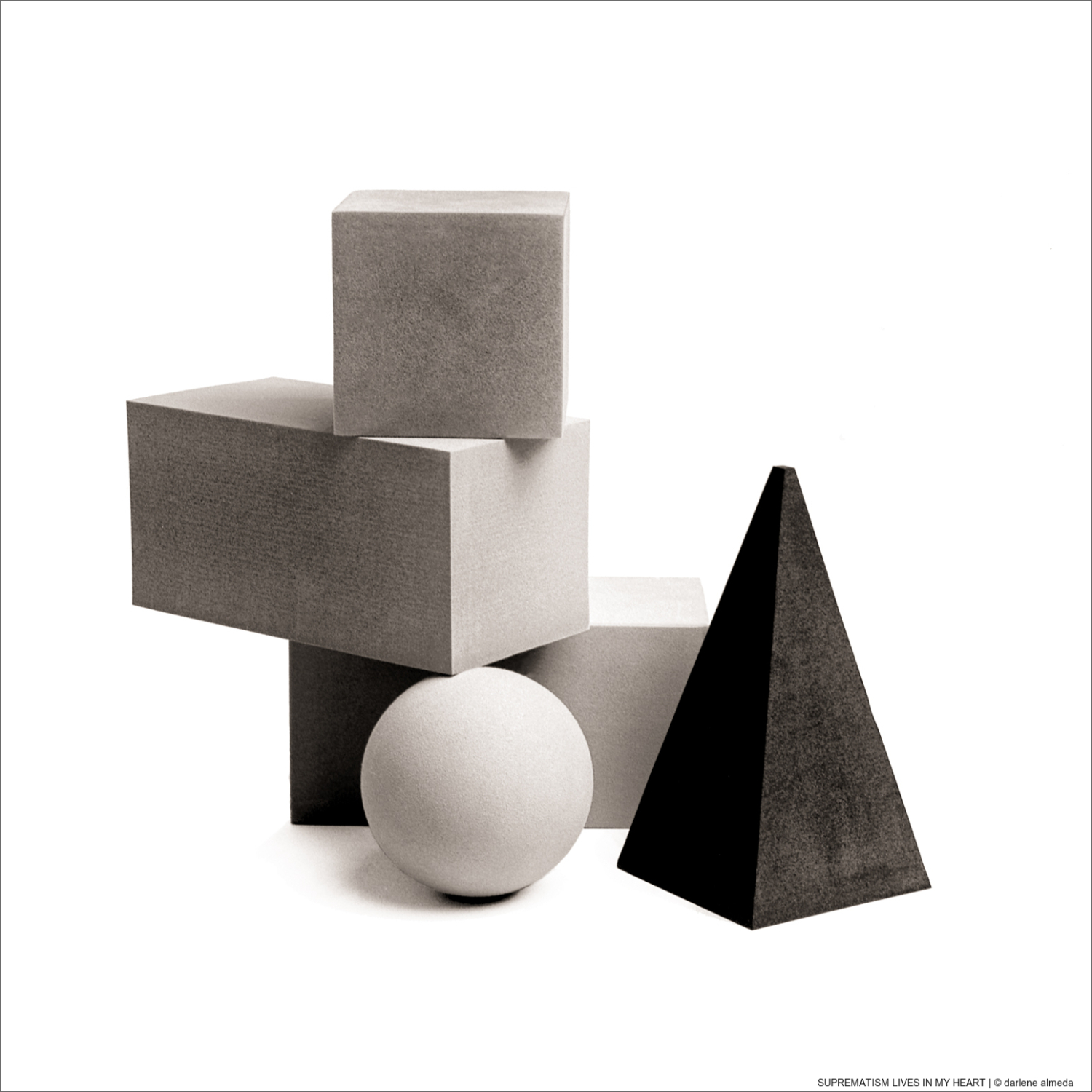
Suprematism (Russian: Супремати́зм) is an art movement, focused on basic geometric forms, such as circles, squares, lines, and rectangles, painted in a limited range of colors. It was founded by Kazimir Malevich in Russia, around 1913, and announced in Malevich’s 1915 exhibition, The Last Futurist Exhibition of Paintings 0.10, in St. Petersburg, where he, alongside 13 other artists, exhibited 36 works in a similar style.[1] The term suprematism refers to an abstract art based upon “the supremacy of pure artistic feeling” rather than on visual depiction of objects.[2]
1. Honour, H. and Fleming, J. (2009) A World History of Art. 7th edn. London: Laurence King Publishing, pp. 793–795. ISBN 9781856695848
2. Malevich, Kazimir (1927). The Non-Objective World. Munich.
from: https://en.wikipedia.org/wiki/Suprematism
—
Text and Photographs ©2017 Darlene Almeda
A Fuji X100T was used to shoot the behind-the-scene photos in this article.
This article was also published on PetaPixel.
